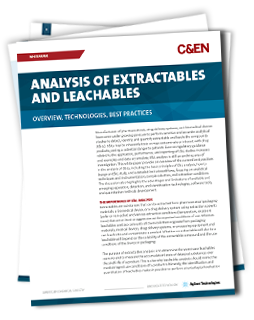
Manufacturers of pharmaceuticals, drug delivery systems, and biomedical devices have come under growing pressure to perform sensitive and accurate analytical studies to detect, identify, and quantify extractable and leachable compounds (E&Ls). E&Ls may be inherently toxic or may contaminate or interact with drug products, posing a potential danger to patients. Even as regulatory guidance related to the application, performance, and reporting of E&L studies increases and examples and data accumulate, E&L analysis is still an evolving area of investigation. This whitepaper provides an overview of the current best practices in the analysis of E&Ls, including the basic principles of E&L analysis, how to design an E&L study, and a detailed look at workflows, focusing on analytical techniques and instrumentation, sample selection, and extraction conditions. The discussion also highlights the advantages and limitations of available and emerging separation, detection, and identification technologies, software tools, and quantitative methods development.